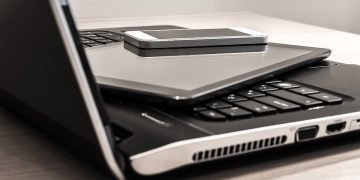In today’s fast-paced, technology-driven world, it can be easy to become overwhelmed and burnt out by constant digital stimulation. From smartphones and social media to emails and endless notifications, our digital devices can quickly consume our time and energy, leaving us feeling drained and disconnected. That’s why taking the time to unplug and recharge is essential for our mental, emotional, and physical well-being. In this article, we’ll explore the benefits of a digital detox, provide a step-by-step guide to planning your own detox, and offer tips for maintaining a healthy balance between technology and real life.
Why Unplugging is Important
The Impact of Technology on Mental Health
The constant barrage of information and stimulation from our digital devices can take a toll on our mental health. Studies have shown that excessive screen time can lead to increased stress, anxiety, and depression. By taking a break from our devices, we can give our minds a much-needed rest and improve our overall well-being.
The Importance of Being Present
When we’re constantly distracted by our phones and computers, we miss out on the present moment. By unplugging and being more mindful of our surroundings, we can fully engage with the world around us and deepen our connections with others.
Enhancing Creativity and Productivity
Taking a break from technology can also boost our creativity and productivity. When we’re not constantly checking emails or social media, we have the space to think more creatively and focus on important tasks without distractions.
How to Plan Your Digital Detox
Set Clear Goals
Before embarking on your digital detox, it’s important to set clear goals for what you hope to achieve. Whether it’s reducing stress, improving focus, or simply reconnecting with loved ones, knowing your objectives will help you stay motivated throughout the process.
Start Small
If the idea of completely disconnecting from technology feels overwhelming, start small. Consider implementing tech-free hours during your day or designating certain days as “offline” days. Gradually increase the length of your digital detox as you become more comfortable with the idea of unplugging.
Notify Others
Let your friends, family, and coworkers know that you’ll be taking a digital detox. This way, they’ll understand why you may be less responsive to texts, emails, or social media messages during this time.
Plan Alternative Activities
To avoid the temptation of reaching for your phone or computer, plan alternative activities to keep yourself busy during your digital detox. Consider going for a walk in nature, reading a book, or trying a new hobby that doesn’t involve screens.
Reflect on Your Experience
After completing your digital detox, take some time to reflect on your experience. What did you learn about your relationship with technology? What changes do you want to make moving forward? Use this reflection as a guide for creating a healthier balance between technology and real life.
Tips for Maintaining a Healthy Tech-Life Balance
Establish Tech-Free Zones
Designate certain areas of your home, such as the bedroom or dining room, as tech-free zones. This will help you create boundaries between your digital devices and personal space.
Set Boundaries with Technology
Establishing boundaries with technology is crucial for maintaining a healthy balance. Consider setting specific times during the day when you’ll check emails or social media, and stick to these limits to prevent burnout.
Practice Mindfulness
Mindfulness techniques, such as meditation and deep breathing exercises, can help you stay present and focused in a technology-driven world. Incorporate mindfulness practices into your daily routine to reduce stress and improve overall well-being.
Prioritize Self-Care
Taking care of yourself is essential for maintaining a healthy tech-life balance. Make time for activities that nourish your mind, body, and soul, whether it’s exercising, getting enough sleep, or spending time with loved ones.
Seek Support
If you’re struggling to maintain a healthy balance between technology and real life, don’t be afraid to seek support. Reach out to friends, family, or a mental health professional for guidance and encouragement.
Conclusion
In conclusion, unplugging to recharge is essential for our overall well-being in a technology-driven world. By taking the time to disconnect from our digital devices, we can reduce stress, improve focus, and deepen our connections with others. Use the step-by-step guide outlined in this article to plan your own digital detox and incorporate tips for maintaining a healthy tech-life balance. Remember, finding a healthy balance between technology and real life is a lifelong journey, so be patient with yourself and prioritize self-care along the way.















































